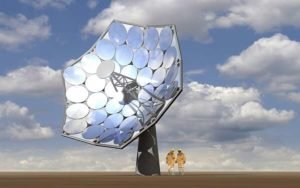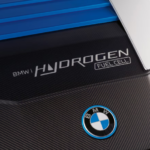 A six-junction III–V solar cell with a 47.1% conversion efficiency rate under 143 Suns concentration has been developed by researchers from the U.S. Department of Energy’s National Renewable Energy Laboratory (NREL).
A six-junction III–V solar cell with a 47.1% conversion efficiency rate under 143 Suns concentration has been developed by researchers from the U.S. Department of Energy’s National Renewable Energy Laboratory (NREL).
 They said that they have achieved an efficiency rate of 39.2% under one-sun illumination. The cell is based on six different photoactive layers fabricated with alloys of III–V semiconductors, which can each capture light from a specific part of the solar spectrum.
They said that they have achieved an efficiency rate of 39.2% under one-sun illumination. The cell is based on six different photoactive layers fabricated with alloys of III–V semiconductors, which can each capture light from a specific part of the solar spectrum.
The device contains about 140 total layers of various III-V materials to support the performance of these junctions, and yet is three times narrower than a human hair.
Due to their highly efficient nature and the cost associated with making them, III-V solar cells are most often used to power satellites, which prize III-V’s unmatched performance. On Earth, however, the six-junction solar cell is well-suited for use in concentrator photovoltaics.
One way to reduce cost is to reduce the required area and one can do that by using a mirror to capture the light and focus the light down to a point.
Then one can get away with a hundredth or even a thousandth of the material, compared to a flat-plate silicon cell. You use a lot less semiconductor material by concentrating the light. An additional advantage is that the efficiency goes up as you concentrate the light.
The potential for the solar cell to exceed 50% efficiency is “actually very achievable” but the 100% efficiency cannot be reached due to the fundamental limits imposed by thermodynamics.
The six-junction solar cell now holds the world record for the highest solar conversion efficiency at 47.1%, which was measured under concentrated illumination. A variation of the same cell also set the efficiency record under one-sun illumination at 39.2%.
Reference- NREL Press Release, PV Magazine






